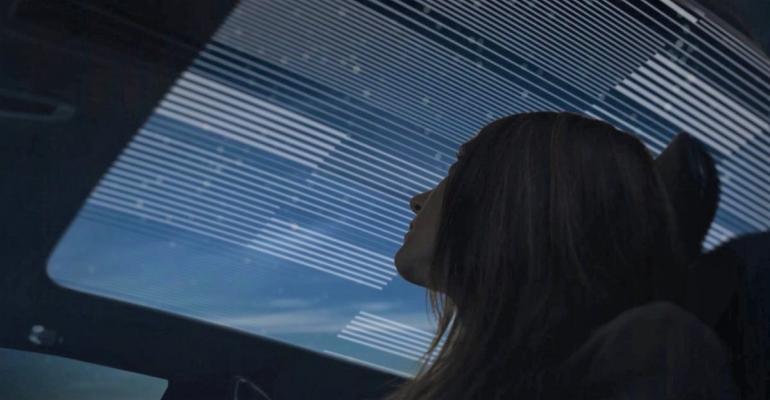Since the release of its teaser trailer earlier this year at CES, automotive enthusiasts have been scrambling for details of Cadillac’s upcoming “ultra-luxury” Celestiq battery-electric sedan. And for good reason.
Rumored to boast 300 miles (483 km) of range, cutting-edge infotainment and specially curated handcrafted materials that will enable Cadillac to design each vehicle to “reflect the individuality of its owner,” there is much to get excited about ahead of the BEV’s projected release date in 2022.
But among all the confirmed specs, one particular feature has arguably generated the most intrigue: the roof.
The Celestiq’s roof breaks new ground in terms of the occupant experience, enabling occupants to “tune” the tint of the all-glass roof – which are becoming more and more commonplace –based on each occupant’s desired natural light preference.
Yet, while this functionality has certainly caught the eye, this use case is just another watershed moment in the nanotechnology revolution that has quietly been building up steam – especially when it comes to automotive glass –for years.
With that in mind, below are some of the key ways nanotechnology is being used to not only improve glass but also underpin the EV and auto-emissions-reduction movements while also boosting vehicle safety.
Cutting Heat, Saving the Environment
Reducing emissions is one of the automotive sector’s most pressing goals. Moreover, as more stringent emissions regulations come into effect – such as in the European Union, or relating to the pending climate legislation under the Biden Admin. – many OEMs are increasing investments in the EV space while trying to make their vehicles stand out in what has become a congested marketplace.
This means they are leaving no stone unturned when it comes to lightweighting components, battery technology innovations and more. And nanotechnology-powered glass is proving to be a surprisingly important ally in these efforts.
For example, according to Daimler data, thanks to the power of nanotechnology, vehicles can actually stay 18° F (8° C) cooler than they would be without advanced glass technology. This results in far less air conditioning demand, which in turn allows OEMs to cut the size of AC compressors in their vehicles while also reducing emissions.
Furthermore, in the case of EVs, this reduction in AC use directly impacts battery conservation by allowing the battery to dedicate more energy to actually driving the vehicle versus cooling it – thus extending the vehicle’s range.
Aerodynamics
Sunroofs have always been a popular feature for vehicle owners. However, until recent innovations in glass technology, they did come with significant trade-offs for OEMs.
For example, automakers had to make concessions for headroom to fit in the traditional sliding overhead panel. In addition, without doing away with these sliding panels, installing a “full-glass” roof would have been nearly impossible, as conditions inside the car would have become untenable for occupants due to heat and glare.
However, by leveraging sophisticated glass technology, OEMs can offer the open-air feel of a sunroof without having to make headroom concessions. Additionally, this allows OEMs to lower the height of their vehicles by several inches, enhancing emissions performance, stability, safety and style.
Safety
Glare – and, conversely, highly tinted windows – are massive safety hazards for motorists. However, thanks to innovations in photovoltaic cells and nanotechnology, OEMs are beginning to find ways to mitigate both of these dangers.
 For example, by pairing photovoltaic technology with dynamically tinting glass, vehicle windows can automatically tint and untint to safe levels as road conditions change – such as when a vehicle enters and exits a tunnel or encounters a storm. This not only provides motorists with better glare protection but also enables them to not worry about having to fiddle with clunky traditional sun visors while driving.
For example, by pairing photovoltaic technology with dynamically tinting glass, vehicle windows can automatically tint and untint to safe levels as road conditions change – such as when a vehicle enters and exits a tunnel or encounters a storm. This not only provides motorists with better glare protection but also enables them to not worry about having to fiddle with clunky traditional sun visors while driving.
The automotive sector has been hit incredibly hard over the past 15 months. However, as we move through the pandemic and OEMs begin to bolster investments in emerging technologies to meet modern consumer and regulatory needs, nanotechnology could become one of the most interesting spaces to watch in the automotive world moving forward.
Joseph M. Harary (pictured above, left) is president and CEO of Research Frontiers, a publicly traded technology company and the developer of patented SPD-Smart light-control film technology.





